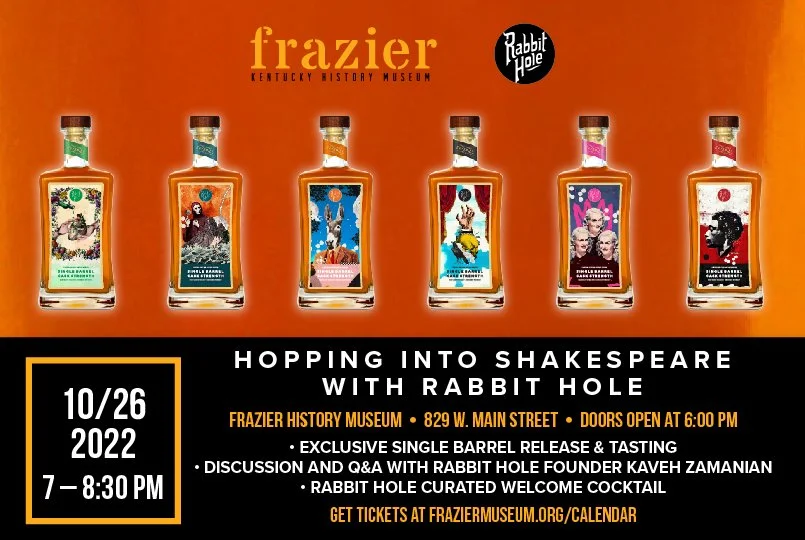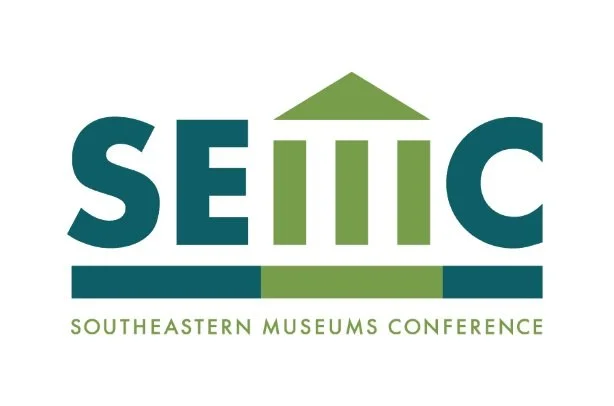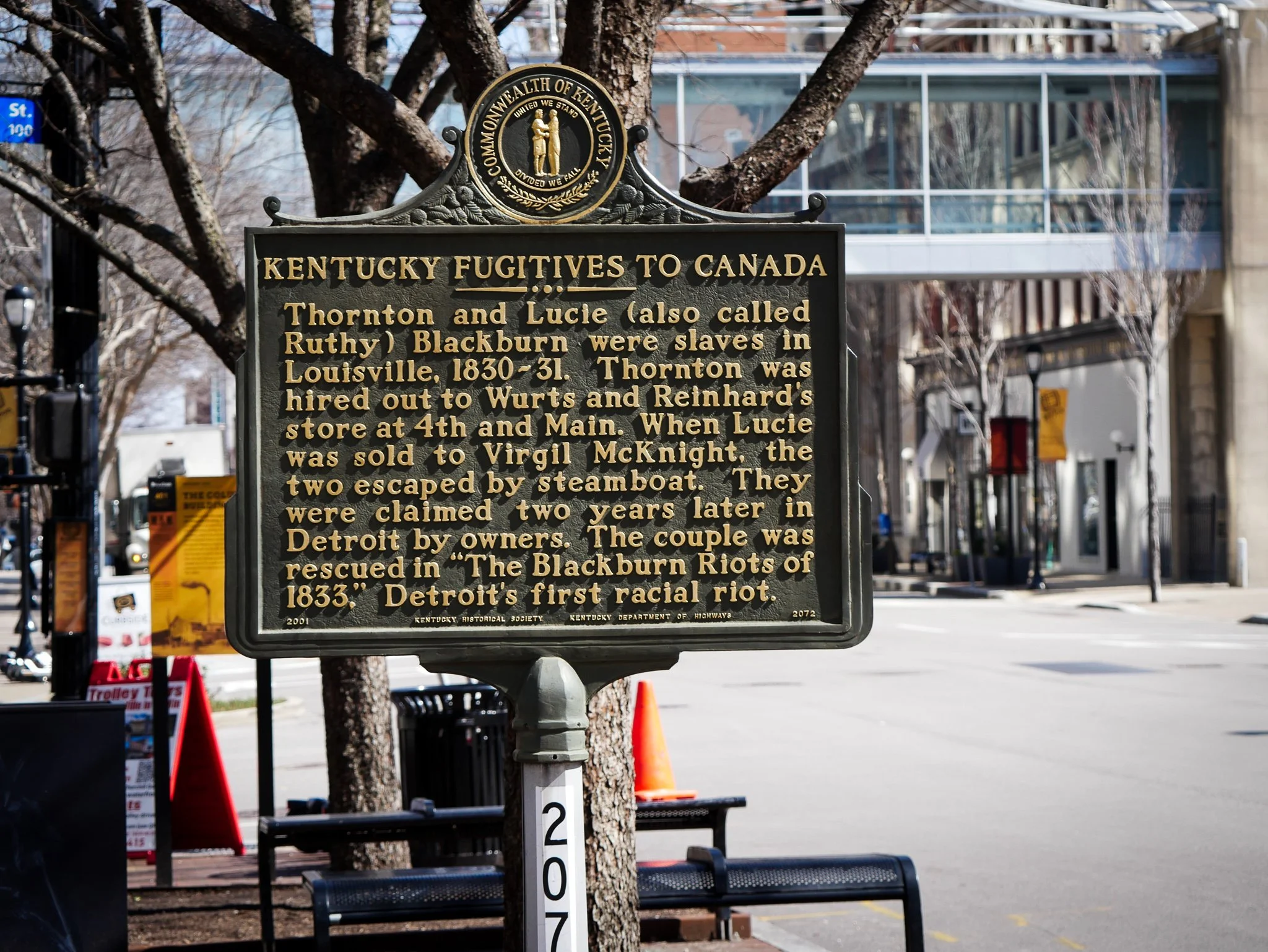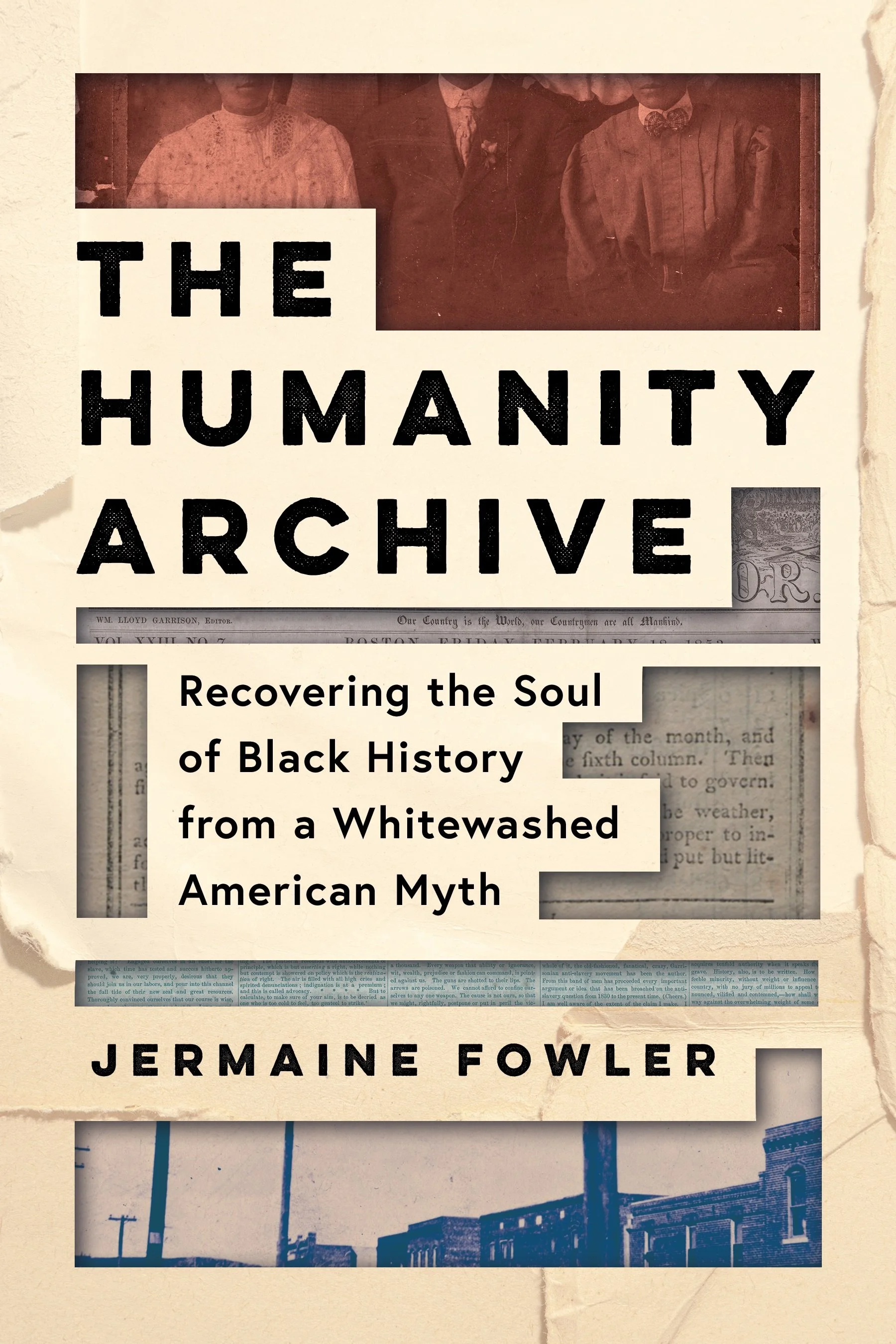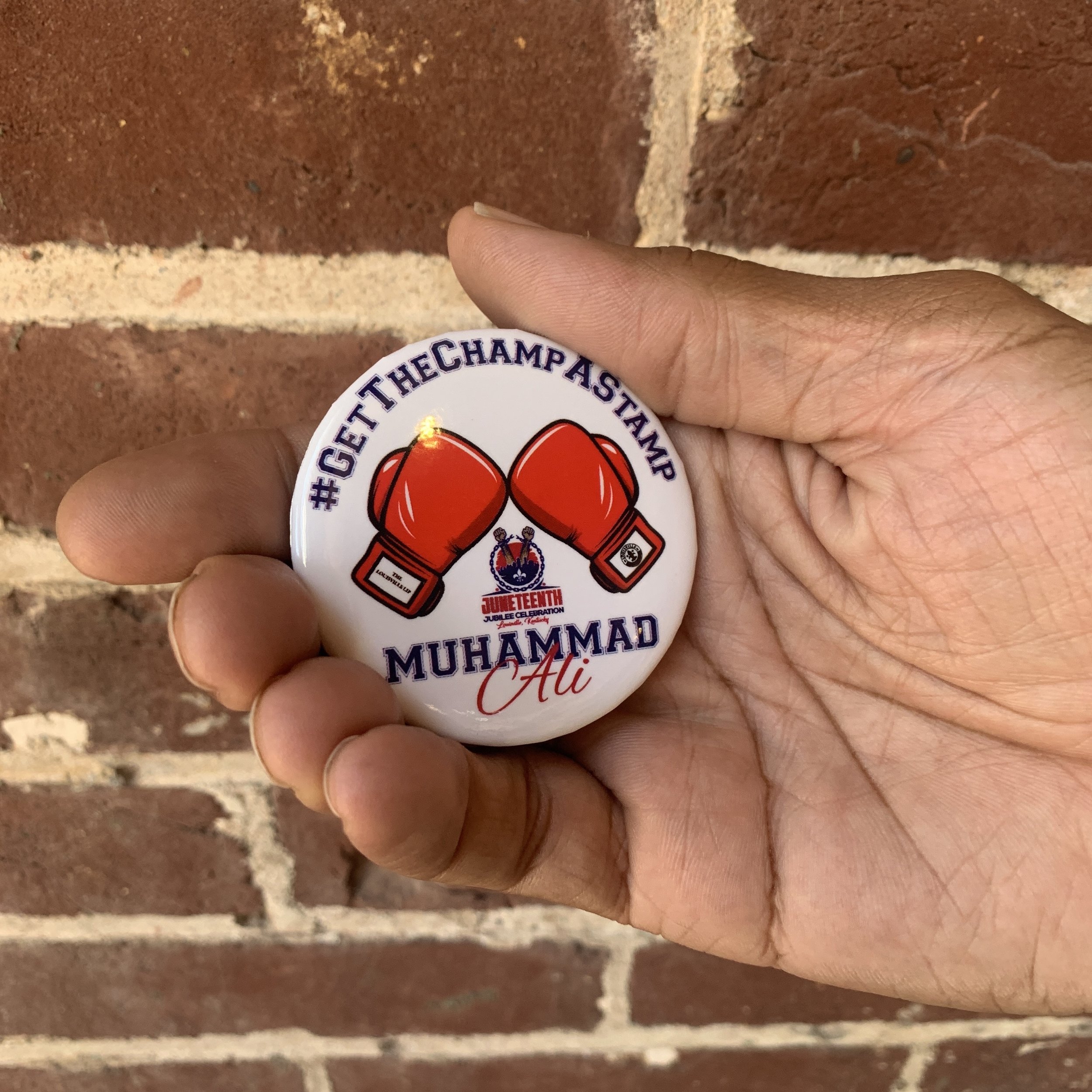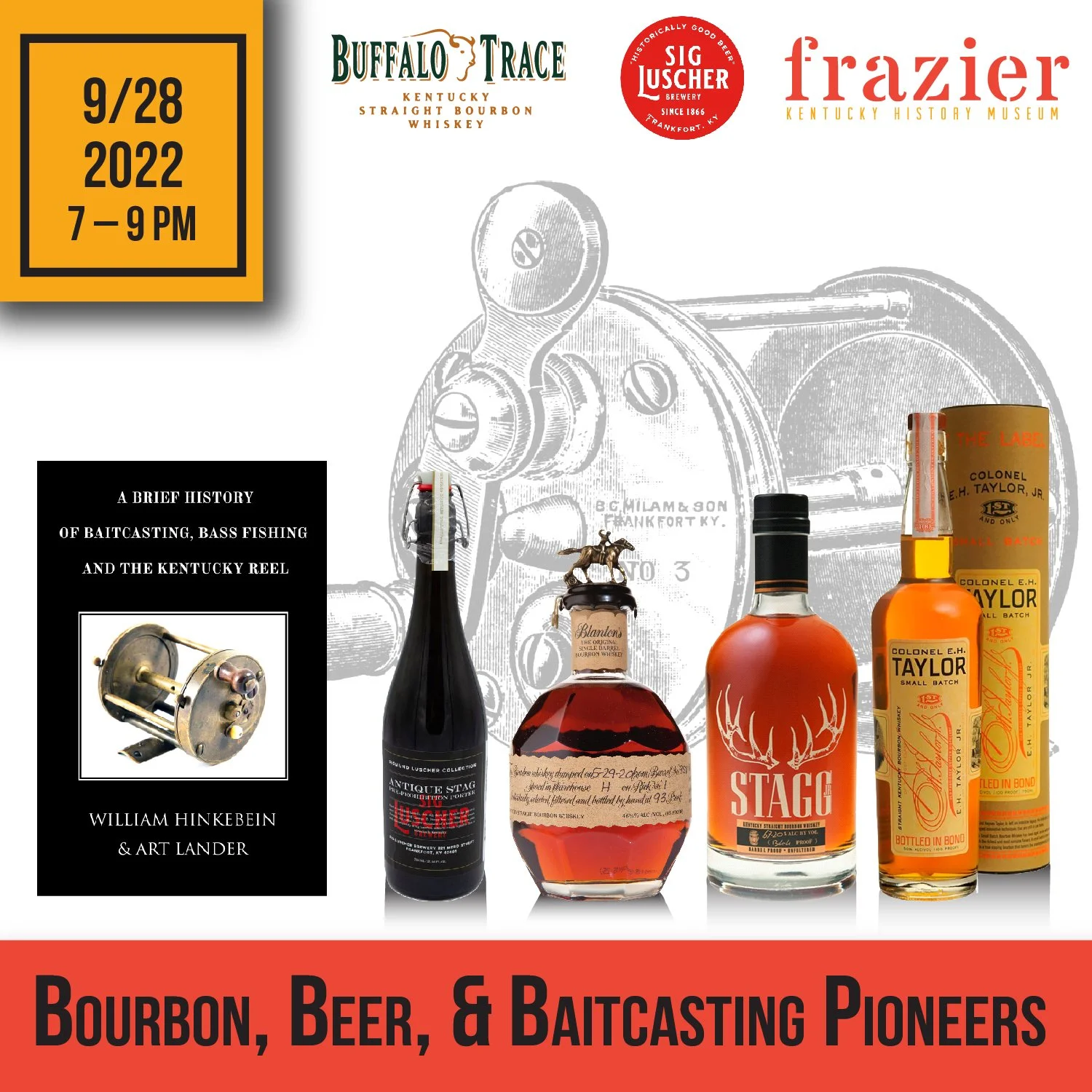Hopping Into Shakespeare With Rabbit Hole, Frazier+ Mobile App Soft Launch, Bloody Harlan’s 1931 Battle of Evarts, and More
Good Monday morning,
Don’t you just love this time of year? When I was a kid, it was all about the extremes of summer and winter, but with age, I have developed a dewy-eyed tenderness for the transitional seasons of spring and fall. Truth be told, lady autumn is now my most adored of the four seasons.
Maybe it is the fall harvest, the musky-sweet smell of a leaf pile, or the crispness in the evening air. However, if I’m being honest, it probably has something to do with the kickoff of football season, Bourbon Heritage Month, and music festivals like Bourbon & Beyond. Speaking of, our staff will be at the Highlands Festival Grounds alongside our 1920 Model-T promoting the Frazier during B&B and Louder Than Life.
September got off to a strong start last week with the introduction of our October 26 Hopping Into Shakespeare With Rabbit Hole program. It is the only place in Kentucky anyone will ever have access to these Bard-inspired bottles. I helped in the barrel selection, so I can tell you from experience it is phenomenal!
In today’s Frazier Weekly, Rachel Platt invites you to pull up a chair at The Big Table on September 11 in Iroquois Park. There’s another award for the Frazier, Mick Sullivan introduces you to our new and exciting mobile app Frazier+, and Brian West advocates for a postage stamp featuring our hometown hero Muhammad Ali. It is the greatest!
We also have an amazing Bourbon Heritage Month program, Bourbon, Beer, & Baitcasting Pioneers, scheduled for September 28. But first, we kick things off with our friends at Maker’s Mark in Sippin’ With Stephen.
Cheers!
Andy Treinen
President & CEO
Frazier History Museum
This Week in the Museum
Sippin’ With Stephen: Maker’s Mark Gold Rushes With Amanda Humphrey
As the official starting point of the Kentucky Bourbon Trail®, the Frazier History Museum shares stories of the people, places, and producers of the Kentucky Bourbon industry. To learn more, visit our Kentucky Bourbon Trail® Welcome Center or tour our Spirit of Kentucky® exhibition.—Simon Meiners, Communications & Research Specialist
This month’s Sippin’ With Stephen features Maker’s Mark education and experience program manager Amanda Humphrey. Amanda informs viewers of the incredible goings on at Maker’s Mark and why you should definitely make it a stop as you explore the Kentucky Bourbon Trail®. September is also National Bourbon Heritage Month, so Amanda and yours truly remind our viewers why Bourbon—the only native American spirit—deserves a month-long celebration!
In keeping with Sippin’ With Stephen tradition, Amanda demonstrates how to make the signature cocktail served at the distillery in Loretto, the Gold Rush.
Gold Rush
Ingredients:
2 oz. Maker’s Mark Bourbon
¾ oz. honey
¼ oz. water
¾ oz. fresh squeezed lemon juice
Lemon wedge for garnish
Directions:
Start by adding ice to shaker, add above ingredients, shake vigorously for 30 seconds, pour into glass, and finish with adding a lemon wedge as a garnish.
Then prop your feet up and enjoy National Bourbon Heritage Month!
Stephen Yates
Community & Corporate Sales Manager
Museum Store: Embroidered Bourbon Bottle Parade Key Chain
Bourbon key chain sold in the Frazier’s Museum Store and online. Credit: Frazier History Museum.
September is Bourbon Heritage Month—a time to reflect on all the Bourbons we love! Embroidered with needlepoint and backed with leather, this key chain sold in the Frazier’s Museum Store and online features a lineup of select brands. Judging by the bottle shapes and color patterns, can you identify them all?
West of Ninth Wins 2022 Southeastern Museums Conference Gold Award
Last week, we received more good news concerning our exhibition West of Ninth: Race, Reckoning, and Reconciliation: The Frazier has been awarded a 2022 Southeastern Museums Conference Gold Award!
Logo for Southeastern Museums Conference. Credit: SEMC.
Logo for West of Ninth: Race, Reckoning, and Reconciliation. Credit: Frazier History Museum.
The SEMC Exhibition Competition showcases the best in our profession and provides benchmarks for regional exhibition efforts in southeastern museums.
All of us here at the Frazier are so proud of this exhibition and are so happy to see the show end on such a high note! Thanks again to our incredible partners for this exhibition, Walt and Shae Smith, whose blog started it all.
Today is your last chance to see this two-time-award-winning exhibition before it closes for good. However, we feel like West of Ninth is too important to let it disappear completely. So our education team has been hard at work documenting the exhibition for posterity and it will have a home on our website soon.
Thanks so much to all of you, our readers, visitors, and supporters, for helping to make West of Ninth such a success!
Amanda Briede
Curator
Casey Harden
Director of Exhibit Ideation
Soft Launch of Mobile App Frazier+ Spotlights Cool Kentuckians
Starting this week, guests visiting the Frazier will notice some new things about the program they receive at the front desk. In addition to our daily tour schedule, we’ve added a few things, like highlighting some of the most do-not-miss objects for each exhibition. What’s most exciting, though, is a QR code that will allow visitors to access Frazier+, a phone-based web app that offers additional video, text, and photos related to highlighted objects.
We’re in the soft-launch phase, and currently have over twenty videos highlighting people and objects in Cool Kentucky, from inventor Garrett Morgan to Paralympian Oksana Masters, ornithologist John James Audubon, and blues guitarist Sylvester Weaver. We can’t wait for you to explore more! Currently, our team is working toward our full launch, which will cover all three floors of gallery space at the Frazier!
We shared a sneak-peek back in July. If you missed it, here it is again. Come visit to find more!
Mick Sullivan
Curator of Guest Experience
Frazier to Offer Title 1 Schools Free Underground Railroad Outreach Programs
Historical marker with information about Lucie and Thornton Blackburn located at the corner of Fourth and Main Streets in Downtown Louisville, Kentucky, March 10, 2022. Credit: Frazier History Museum.
In honor of Underground Railroad Month, I’m pleased to announce the Frazier Museum education team will be offering FREE outreach programs to local Title 1 schools this fall. Teachers may select from a live performance with a Q and A titled “The Runaway” or an interactive class session that shares the story of Lucie and Thornton Blackburn, a couple that fled their enslavers in Louisville during Fourth of July weekend in 1831.
The performance description reads:
The Runaway (1850s): Based on accounts about the Underground Railroad in New Albany and Louisville during the 1850s, as well as accounts of life along the Ohio River during that period, this interpretation imagines the hardships a runaway would have faced in this area and the support a freedman working on a steamboat could have provided a fugitive.
Both outreach options complement an inquiry lesson built around the question “How should we remember the Underground Railroad?” that is available for educators to utilize in the classroom. The Frazier Museum’s The Journey project serves as one of the key sources as students work through the evidence, develop an informed understanding, and take action in their community.
Programs are available through the end of October and spaces are limited, so will be allocated on a first come, first served basis. To learn more or to book a program, please reach out to education@fraziermuseum.org or call (502)753-1045.
Special thanks to the Kentucky Humanities and National Endowment for the Humanities for their support.
Megan Schanie
Manager of School & Teacher Programs
Historical Storyteller Jermaine Fowler’s Book The Humanity Archive Available for Pre-order
Front cover of The Humanity Archive. Credit: Row House Publishing.
The Humanity Archive author Jermaine Fowler. Credit: Jermaine Fowler.
There are people you meet in life who you just instantly sense are gifted, and if you are lucky enough, you to get to watch their talents unfold. That has been my experience with Jermaine Fowler, who has already made his mark with his top-rated history podcast, The Humanity Archive. The podcast will now be in the form of a book coming out next February, and you can be among the first to pre-order it.
The Louisvillian will tell you he grew up seeking knowledge by reading every book he could get his hands on in the free public library. But his brilliance is telling the stories that were left out of the history books, a journey through Black history and, as Jermaine says, “recovering the soul” of it. Lucky us, Jermaine will join us September 13 for our program The Journey, with his storytelling skills helping to share the story of the Underground Railroad. He will make it human as he always does. He is gifted, and he is a gift. Please get to know him and his work.
Rachel Platt
Director of Community Engagement
Bridging the Divide
Cathy Berkey and Jud Hendrix on The Big Table
Flyer for The Big Table. Credit: The Big Table.
If the divisive world we live in has you hungering for more connectedness, you may consider pulling up a chair at The Big Table on September 11 at Iroquois Park. It is a huge potluck dinner where you begin as strangers and leave perhaps as friends. Bring your favorite dish, then get ready to dish about the food, and yourself. I talked with the co-founders of The Big Table, Cathy Berkey and Jud Hendrix, about the event, your invitation, and why this event is needed now more than ever.
Rachel Platt
Director of Community Engagement
History All Around Us
#GetTheChampAStamp Campaign Fights for a Stamp With Muhammad Ali’s Likeness
Readers of Frazier Weekly who are social media savvy can add one more hashtag to the plethora of online catchphrases, like #ReleaseTheSnyderCut, #GingerCatAppreciationDay, #BBN, and #FlyThetheW (a Mick Sullivan favorite): #GetTheChampAStamp.
Earlier this summer, Lonnie Ali and Louisville Mayor Greg Fischer launched a campaign to encourage the United States Postal Service to create a stamp that bears the image of Ali’s husband, world heavyweight boxing champion, activist, and Louisville native Muhammad Ali (1942–2016). A couple weeks ago, the Mayor signed a Metro Council resolution supporting the campaign.
Lonnie Ali, center left, shakes hands with Louisville Mayor Greg Fischer after the Mayor signed a Metro Council resolution supporting the campaign to put Muhammad Ali’s image on a United States Postal Service (USPS) stamp, August 24, 2022. Credit: Office of Mayor Greg Fischer.
A button created for the #GetTheChampAStamp social media campaign, August 31, 2022. Credit: Rachel Platt.
Mayor Fischer, Ali’s family, and the Ali Center are encouraging supporters to share the #GetTheChampAStamp hashtag widely on social media, and post any images of Ali they think would be worthwhile for the United States Postal Service to consider as the basis for a design to honor the Greatest. First, the USPS and the members of its Citizens’ Stamp Advisory Committee would need to decide if Ali is eligible as a subject for commemoration on a US stamp, which takes years to happen.
Established in 1957, the Citizens’ Stamp Advisory Committee is composed of professionals, scientists, doctors, and a philatelist (one who is involved in the study of postage stamps and postal history) who meet on a quarterly basis and serve at the behest of the head of the USPS, the Postmaster General. The committee uses basic criteria to determine if a subject (which can be a person, a place, or a thing) is eligible for commemoration.
Here are just a few of the criteria:
“U.S. postage stamps and stationery will primarily feature American or American-related subjects. Other subjects may be considered if the subject had significant impact on American history, culture, or environment.”
“Living people will not be considered at the present time. Beginning in 2018, proposals for a deceased individual will be considered three years following his/her death.”
“Events of historical significance shall be considered for commemoration on anniversaries in multiples of fifty years.”
Then, according to the CSAC’s website, committee members use “their collective expertise in history, science, technology, art, education, sports, and other areas of public interest” to “consider and then recommend stamp subjects to the PMG (Postmaster General) for final approval.”
If you want to find what other criteria the CSAC uses in its eligibility and selection process, click here.
If you are supportive of getting Muhammad Ali onto a US Postage Stamp, but would rather forgo the hashtag for a more traditional route, you can mail your suggestion to the committee directly. You can find the CSAC’s mailing address and mailing instructions online.
Brian West
Teaching Artist
Dawn of Bloody Harlan in Evarts, Kentucky, May 5, 1931
Since today is Labor Day, a day when we honor and recognize the American labor movement, I thought it appropriate to revisit a pivotal moment in Kentucky’s labor history: the Battle of Evarts in 1931. A conflict between coal miners and coal bosses, the deadly mountainside shootout set the stage for a decade-long period in Eastern Kentucky known as Bloody Harlan. On display in the Frazier’s new permanent exhibition The Commonwealth are several objects from coal country, including a canary cage and scrip issued by the Jellico Mining Co. in Mountain Ash in Whitley County in the early 1900s. To learn about the state of the labor movement in the Kentucky coal industry in the later part of the twentieth century, I recommend the 1976 documentary Harlan County, U.S.A. (ten memorable quotes from which you can read here).
This article originally appeared in the May 3, 2021, issue of Frazier Weekly.
Coal miners in either Harlan County or Bell County, Kentucky, 1931. Credit: Herndon Evans photographs, University of Kentucky Special Collections.
National Guard in either Harlan County or Bell County, Kentucky, 1931. Credit: Herndon Evans photographs, University of Kentucky Special Collections.
On the morning of May 5, 1931, gunfire broke out between union miners and coal bosses’ deputies on a mountain road by the Evarts railyard in Harlan County, Kentucky. The battle, which lasted just fifteen minutes, claimed the lives of three deputies and one miner. It would prove to be the deadliest incident of the Harlan County coal war of the 1930s, a period called “Bloody Harlan.”
The war in Eastern Kentucky’s coal towns had been brewing for several years. The violence it begat was not new to the area—in fact, Harlan had the highest homicide rate of any county in the United States during the 1920s. But as historians James C. Klotter and Craig Thompson Friend point out in their book A New History of Kentucky (2017), the conflict between capitalists and workers in coal country was the result of a convergence of several factors: the sudden downturn in the coal industry, the lack of regulations protecting the miners’ right to organize and collectively bargain, and the bleak situation laid-off workers faced:
“Harlan County had experienced a huge population increase in the years before 1930, and with that expansion came massive societal disorganization for those 65,000 people. The once-proud coal towns had fallen on hard times in the 1920s as coal prices dropped, and the scant profits often went to stockholders, not toward making repairs. Tensions rose, violence increased, and class animosity intensified. Then came the additional problems of the national depression. By 1932, one third of Harlan County’s mines had closed, and 4,000 miners had lost their jobs. Those who did work labored harder for less: Payment in the 1920s for digging a ton of coal was 81 cents; by 1931, it had fallen to 35 cents per ton. Relief from the New Deal lay in the future, so hungry, desperate, jobless people roamed the region, looking for work or just food. Company evictions left many homeless and hungry, and even more just angry. As one miner cried out, “We don’t live; we just exist.” And another stressed, “We don’t want to get rich. We want to eat.”
On February 16, 1931, the Black Mountain Coal Company announced a ten percent wage cut for miners. In response, the miners grew angry, staged a walkout, and appealed to the United Mine Workers of America (UMWA) for assistance. At a mass meeting convened in Pineville, a town in Bell County, Kentucky, the UMWA’s national vice president implored the miners to do their best to forge “a spirit of cooperation” with the bosses, hoping to reach a resolution. But the bosses would not cooperate: As retaliation for the union activity, they implemented mass firings and evictions in their coal camps.
Of course, to keep the mines operating, the companies had to enlist “scabs”—non-union workers who crossed the picket lines to replace miners who were on strike. A force of deputies called “gun thugs”—security officers commanded by Harlan County Sheriff J. H. Blair—was tasked with quashing any activity that could disrupt production.
That’s what set the stage for the May 5 incident at Evarts.
That morning, a four-vehicle “gun thug” motorcade made its way through the mountains. Three of the vehicles were there escorting the fourth, a truck loaded with household goods for scabs, when suddenly a gunshot rang out. As Kentucky Monthly contributor Ron Soodalter writes in the 2016 article “The Price of Coal,” while neither side would admit to firing the first shot, both sides had come prepared for bloodshed:
“According to prosecution witnesses in the murder trials that followed, a union leader had called a meeting the night before, and—aware that the deputies would be wearing bulletproof vests—had urged a gathering of some 300 union men to aim high. “Shoot to get meat,” he purportedly said. “Shoot their goddamn heads off.””
During the pivotal fifteen-minute battle, over 1,000 gunshots were exchanged, leaving four dead and several wounded.
Two days later, Governor of Kentucky Flem D. Sampson called in a force of about 400 Kentucky National Guardsmen to quell the violence and disarm the combatants.
Regardless, the union miners capitalized on their momentum: In the weeks that followed the firefight at Evarts, the strike spread to twenty-three different coal operations based in Harlan and Bell counties and the number of miners on strike ballooned from 1,800 to 5,800. By the end of that spring, 11,000 miners had joined the UMWA.
Ultimately, the Black Mountain strike came to an unsuccessful end. But the broader conflict in Kentucky coal country would persist through the 1930s, having all sorts of implications—economic, political, and cultural.
Sources
Klotter, James C., and Craig Thompson Friend. A New History of Kentucky. 2017: 352.
Simon Meiners
Communications & Research Specialist
Calendar of Programs
Penny Peavler on Early Black Bass Angling and the Kentucky Reel
If you’re hooked on fishing, good storytelling, history, Bourbon, or even beer, an upcoming program at the Frazier on September 28 is for you. I’m going to let Frazier board member Penny Peavler really bait the hook to reel you all the way in.—Rachel Platt, Director of Community Engagement
Graphic for the Frazier’s September 28 Bourbon, Beer, & Baitcasting Pioneers program. Credit: Frazier History Museum.
One of the lesser-known stories highlighted in the Frazier’s Cool Kentucky exhibition is that of the level-line multiplying gear fishing reel, generally known as the Kentucky Reel: the forerunner of today’s modern baitcasting reels.
More than 200 years ago, Kentucky was—and still is—a fisherman’s paradise. Early settlers found the fish to be abundant in Kentucky’s waters, with large numbers of black bass found in the rivers and streams of central Kentucky. Thus the bass became an important early source of both food and sport for Kentuckians.
Albert Bacon Blanton’s fishing reel. Credit: Kentucky Historical Society.
George W. Snyder reel. Credit: William Hinkebein.
Many connections exist between the early distillers and early reel makers—and Frank Stagg, the son of famed distiller George T. Stagg, married the granddaughter of reel maker B. C. Milam, Ann Milam Keenon. These reels were passed down as family heirlooms. Frank Stagg, who was the financial director of Stagg’s OFC Distillery, fished with a reel passed down for generations, eventually becoming part of the collection of the Kentucky Historical Society in Frankfort.
Front cover of A Brief History of Baitcasting, Bass Fishing, and the Kentucky Reel by William Hinkebein and Art Lander. Credit: The Whitefish Press.
On September 28, author William Hinkebein and Art Lander will join Sig Luscher brewer Tim Luscher and a Buffalo Trace brand ambassador to swap big fish stories and sample fine Bourbon. Sig Luscher brewery was founded in 1855, and Tim’s grandfather was manager of Stagg’s OFC Distillery. Each guest will receive a copy of Hinkebein and Lander’s new book, A Brief History of Baitcasting, Bass Fishing, and the Kentucky Reel, and taste a selection of beer and Bourbons: Sig Luscher’s Pre-Prohibition Porter, aged in 15-year George T. Stagg Bourbon barrels; a Kentucky Common, the official beer of Kentucky; E. H. Taylor Small Batch Bourbon, Blanton’s Bourbon, and Stagg Jr. Bourbon.
Early bass fishing in Kentucky was stream fishing, and James A. Henshall, author of Book of the Black Bass (1881), wrote that this style of fishing “constituted” the pleasure and perfection of bass angling. Three towns, all located on high-quality streams, and settled early in Kentucky history, figure prominently in the story of early bass fishing in Kentucky and the birth of the Kentucky Reel: Paris, Cynthiana, and Frankfort. Later, Louisville figured into the equation as reel makers spread throughout the Commonwealth.
The anglers who came to Kentucky after the Revolutionary War were eager to catch the black bass that were so abundant in the region’s streams and rivers. However, they soon discovered that the fishing tackle and techniques with which they were familiar were not well suited to the challenges of their new environment. What anglers really needed was a multiplying reel, one that was geared so that its spool rotated multiple times with each turn of the reel’s crank. Multiplying reels made it possible to cast a baited hook farther because the line flows more freely off the reel’s spool. Over time an ideal gear ratio of a multiplying reel used for bass fishing was found to be four-to-one, which meant that the reel’s spool rotated four times with every turn of the reel’s crank. Multiplying reels also offered another important advantage over single-action reels: a faster retrieve. If a hooked bass decided to charge, the angler could keep a tight line on a darting, acrobatic fish.
Kentucky is where the practice of casting live bait originated. This technique, and the Kentucky Reel that it spawned, revolutionized the sport of angling forever. Kentuckians made design improvements and elevated the level of precision craftsmanship to a fine art, so much so that it became one of the ways in which the state was identified worldwide.
Kentucky Reels were handmade, produced before the introduction of interchangeable parts, so each reel was a unique creation. No two had the same dimensions and they were assembled one at a time. These early reel makers, George W. Snyder (1810), J. F. and B. F. Meek (1835), and others, were all trained in fields that required precision engineering: They were watchmakers, jewelers, locksmiths, and silversmiths. The reels were highly prized and are highly collectible still today. Fashionable gentlemen of the nineteenth century ordered and fished with custom-made reels which were often engraved with the owner’s full name.
Join us! Click here for more information.
Penny Peavler
Guest Contributor, Frazier History Museum
Guest Contributor

